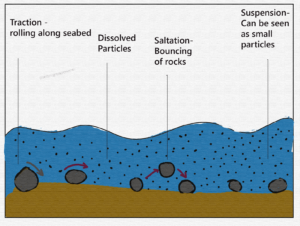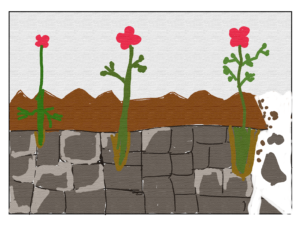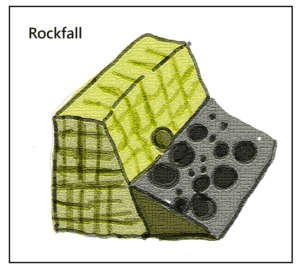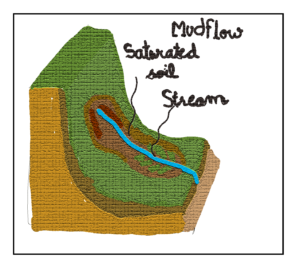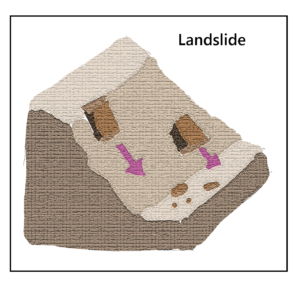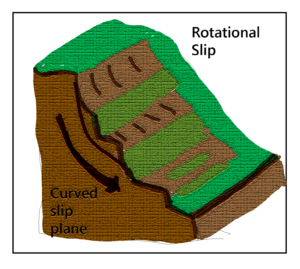Coastal transportation and deposition are the choreographers of our planet’s ever-changing shorelines. These dynamic processes, driven by ocean currents and geological forces, play a pivotal role in sculpting the captivating landscapes where land meets sea. From the rhythmic ebb and flow of tides to the relentless work of waves, they orchestrate the movement of sediments, shaping sandy beaches, rocky shores, and vibrant estuaries. Understanding these coastal processes is not just a matter of natural curiosity; it’s about unravelling the forces that create and transform these environments, exploring the intricate web of life they support, and recognizing their significance in our planet’s geology, ecology, and human societies. As we embark on this exploration, we’ll journey through the captivating world of coastal transportation and deposition, from the tranquil beauty of barrier islands to the dramatic cliffs of headlands, gaining insights into the mesmerizing dynamics of these coastal environments and their profound impact on our world.
Now that you know how erosion affects landforms along the British coast, you need to know how transportation and deposition can also affect them and what they are. In your geography examination, you may be asked about how materials are moved and dropped along the coast.
Transportation
When we are talking about the transportation of materials along the coast, we are talking about how they are moved. We call the main process of transportation longshore drift.
Longshore drift occurs because waves go in the same direction as the prevailing wind. The swash then carries material that is already being transported by the sea further up the beach, and the backwash carries material further down the beach. Naturally, this creates a zigzag pattern along the coast.
There are other four ways in which material on a beach is moved:
- Solution – Soluble minerals like chalk and limestone dissolve in the water and are then carried away in the form of solution. You cannot even see them moving away.
- Suspension – Small particles are easily suspended in the seawater. Material like clay and silts are suspended and flow away with the flow.
- Saltation – Small particles like small rocks and pebbles bounce with the force of water and move with it.
- Traction – They are dragged and rolled in the water with force of water and keep getting eroded along the way.
Deposition
Eventually, the materials that are being transported by the water have to be deposited somewhere. This part of the process is called deposition. Usually, materials are dropped somewhere along the coast. But, they don’t usually get dropped until the movement of the water slows down.
This is why waves that have less energy carry more material to the coast. They are not strong enough to take material away and the material that they do carry is usually deposited quickly. We call these waves constructive waves. They have a powerful swash that can carry material up the coast, but a weak backwash so that they do not take a lot of material away. When the sea loses energy, it drops the material it has been carrying. This is known as deposition. Deposition can occur on coastlines that have constructive waves.
Factors leading to deposition include:
- waves starting to slow down and lose energy.
- shallow water.
- sheltered areas, e.g. bays
- little or no wind
Deposition Landforms
As materials are deposited by the sea, landforms can start to form. A lot of the beaches that you can see in the United Kingdom are the product of deposition. This is because constructive waves deposit a great amount of sand or shingle. Sand beaches are flat, wide and comfortable to walk on. Shingle beaches are narrow, and steep and they can hurt your feet.
The materials that are deposited by the sea can also form spits, bars and sand dunes. Sand dunes are easy to recognise, but spits and bars are a little bit more difficult to recognise. Bars usually look like two headlands have joined together, cutting off some water and forming a lagoon.
Weathering
Although weathering is not a transportation process it is one of the major factors that help another agent to help in the movement of particles from one place to another. The smaller the particle the easier it is to be transported by water and wind. The rocks exposed to the water along the coastline are weathered continuously by the action of water. Weathering can be categorised into three types viz. Freeze-thaw weathering, biological weathering and chemical weathering.
Freeze-thaw weathering
Porous rocks allow the entry of water. Water puts pressure from the insides of the rocks and expands which ultimately breaks the rock into pieces.
Biological weathering
Weathering occurs due to pressure applied by the roots of the plants when they try to reach out to water underground.
Chemical weathering
Rocks which are made of minerals like limestone easily dissolve in the weak acids present in rainwater and seawater. The weakened rocks break down into smaller pieces.
Mass Movement
Another kind of movement of particles is mass movement. This occurs due to gravity. There are four types of mass movements.
1. Rockfall – Big or small particles of rocks fall down the cliff under the influence of gravity and weathering.
2. Mudflow – Soil filled with water flows down the slope of the cliff.
3. Landslide – Big blocks of rocks slide down the hill due to gravity.
4. Rotational slip – This happens when saturated soil slips down from a curved surface.
Erosion
The waves are responsible for wearing the rock away along the coastline. The eroded particles are transported away with the waves. These waves are destructive in nature.
There are four types of coastline erosion:
- Abrasion – When small pebbles grind along a rock and the rock becomes smooth over time.
- Attrition – When rocks carried by sea hit each other and break into smaller parts this is called attrition.
- Solution – Minerals like chalk and limestone dissolve in seawater and are transported from one place to another.
- Hydraulic action – this is the sheer power of the waves as they smash against the cliff. Air becomes trapped in the cracks in the rock and causes the rock to break apart.
Frequently Asked Questions About Coastal Transportation and Deposition
What are sediment transport processes along coastlines, including longshore drift, littoral cells, and the formation of depositional landforms like spits and bars?
Sediment transport involves the movement of sand and sediment along coasts, leading to the formation of depositional landforms.
Explain how longshore drift and littoral cells influence the distribution of sediment along coastlines and the formation of sandy beaches.
Longshore drift moves sediment parallel to the shoreline, creating sandy beaches and contributing to the formation of spits and bars.
Describe the development and characteristics of depositional landforms like spits, bars, and barrier islands, including their ecological importance.
Depositional landforms protect coastlines, provide habitat, and play a role in coastal dynamics and ecosystem health.
Discuss the challenges and benefits of managing coastal erosion and sediment deposition through engineering solutions like groynes, breakwaters, and beach nourishment.
Engineering solutions can mitigate erosion but may have ecological and economic trade-offs, requiring careful planning and monitoring.
How do coastal transportation processes impact human activities, including shipping, port management, and recreational beach use, and what considerations are involved in coastal zone management?
Coastal transportation processes affect navigation, sediment accumulation, and shoreline development, necessitating integrated coastal zone management to balance human and natural needs.






